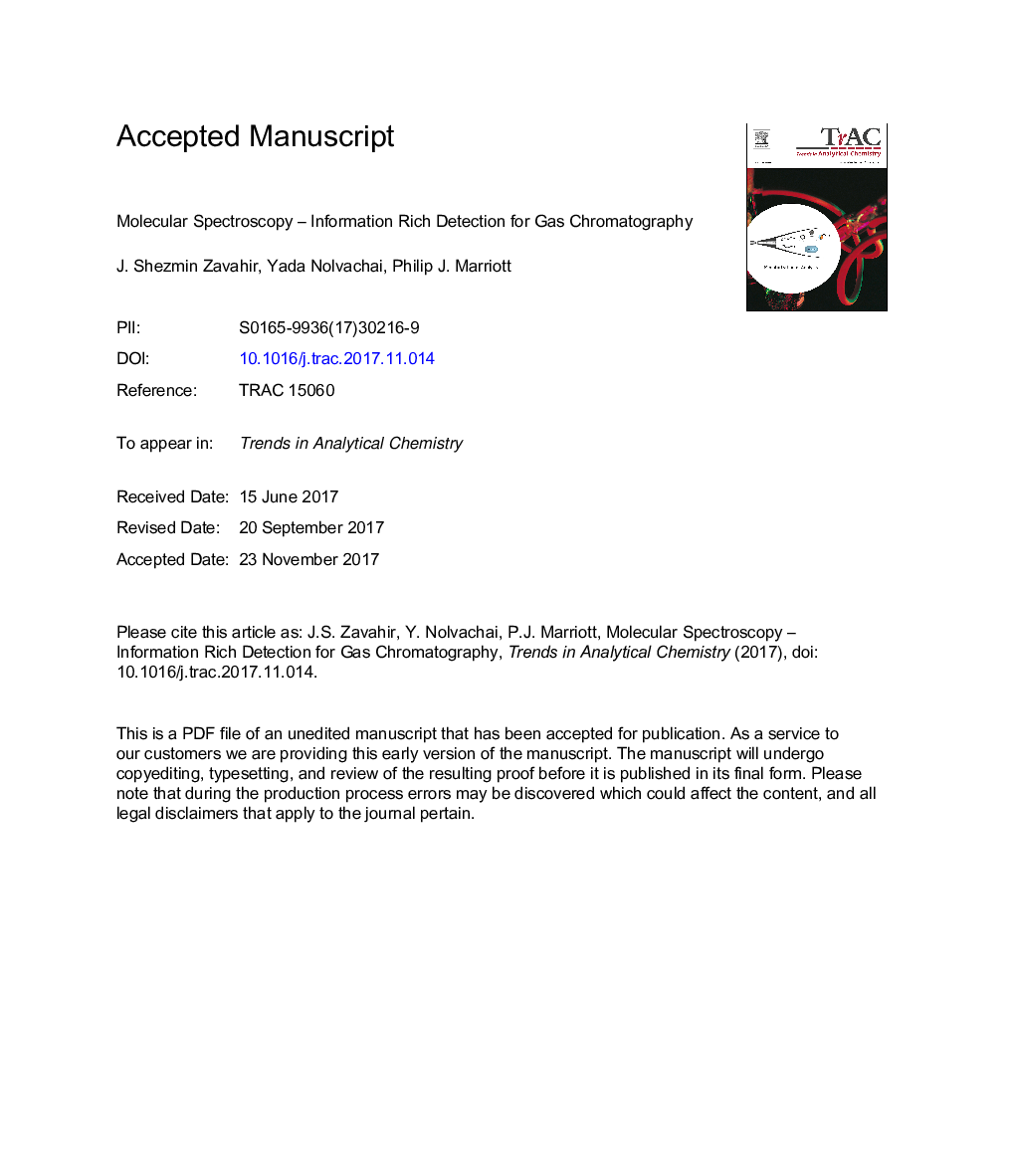| Article ID | Journal | Published Year | Pages | File Type |
|---|---|---|---|---|
| 7687963 | TrAC Trends in Analytical Chemistry | 2018 | 62 Pages |
Abstract
Molecular spectroscopic detection plays a crucial role in gas chromatography (GC). Some detectors constitute element-selective spectroscopy, where an element-containing species generates the detected signal, e.g. flame photometric detection (S, P, Cu); chemiluminescence detection (S, N). These respond with selective response, usually with excellent analyte detectability and reduced matrix interferences. Classical molecular spectroscopic detectors - Fourier transform infrared, nuclear magnetic resonance, ultraviolet - respond by giving a spectrum characteristic of the (intact) molecule. Molecular structure response plays multi-faceted roles: it produces a unique spectrum of a molecule, provided it is resolved by the column and presented to the detector as a single compound; or the chromatogram can be generated by responding to the total signal, or selectively to a given component of the signal. This review summarises the response, sensitivities, applicability, and recent literature reports of molecular spectroscopic detection. Hyphenation with dual detection and brief comments on multidimensional GC is included.
Keywords
Related Topics
Physical Sciences and Engineering
Chemistry
Analytical Chemistry
Authors
J. Shezmin Zavahir, Yada Nolvachai, Philip J. Marriott,
